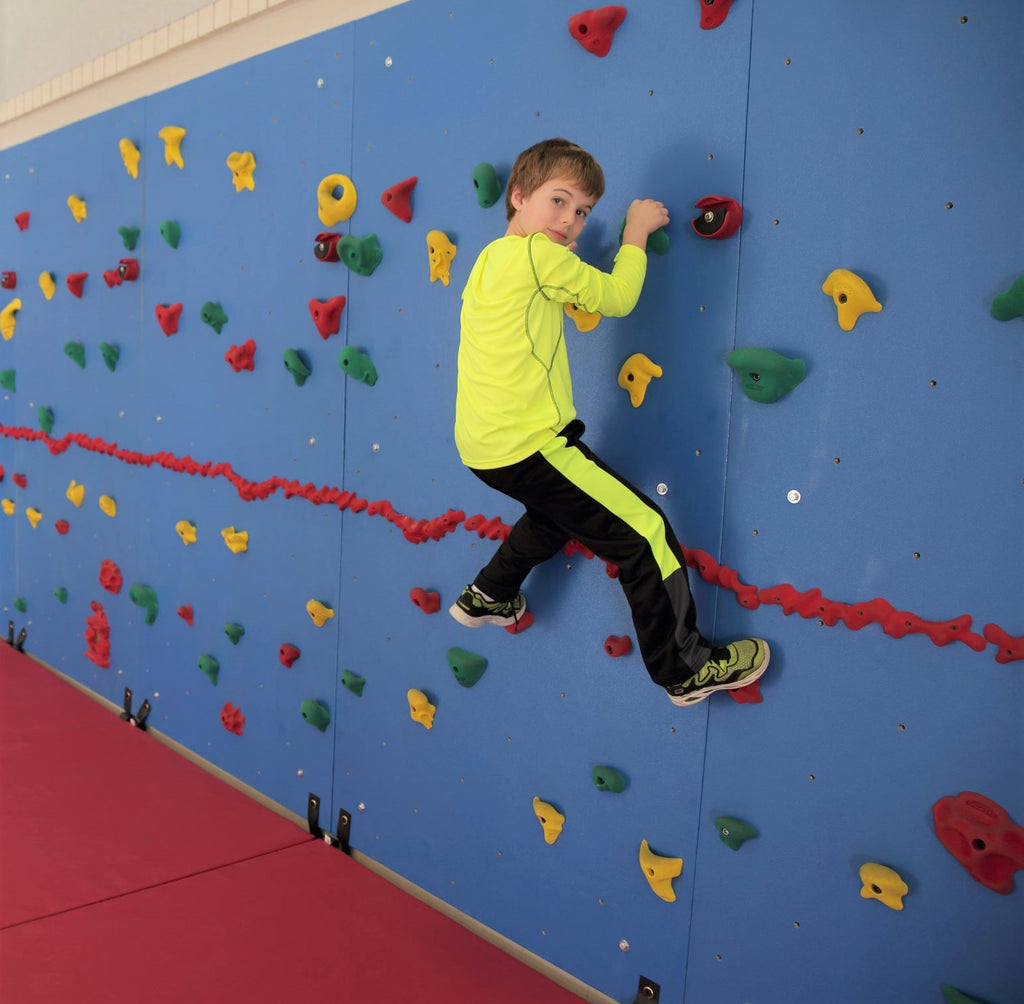
Different Types of Rock Climbing Explained
There are many different types of rock climbing and it can be confusing, especially for new climbers. Here’s an overview of the different styles of rock climbing. What’s your favorite way to climb? Leave a comment to let us know!
Traverse Climbing
Traverse climbing is horizontal climbing where the goal is to make is across a Traverse Wall®, rather than to the top. Traverse Walls are typically no higher than 10 feet high and don’t involve ropes, harnesses or safety equipment other than safety mats.
Bouldering
Bouldering is similar to traverse climbing in that no safety equipment other than a crash pad is used to protect against falls. Typically climbers climb no higher than 15 feet. This style of climbing can be done indoors or outdoors.
Top Rope Climbing
In top rope climbing, special safety equipment is used – a safety rope, harnesses, carabiners and belay devices. The rope is anchored at the top of the climb and attaches to the climber’s harness and to the belayer’s harness. As the climber ascends, the belayer pulls in the rope slack to protect against a long fall. At the completion of the climb, the belayer lowers the climber down using the rope. This style of climbing can be done indoors or outdoors. When top rope climbing outdoors, most top rope anchors can be reached by an alternate route such as hiking on the backside of the climb.
Traditional Climbing or Trad Climbing
In traditional climbing, the same safety equipment as top rope climbing is used and the climber places additional protective equipment (protection) into cracks and features on the rock to protect against a fall since there is no top rope anchor in this style of climbing. The placed protection is then removed when the climb is complete.
Sport Climbing
Sport climbing is similar to trad climbing; however protection, via fixed anchors, is already in place so climbers clip into this protection rather than placing their own protection. Sport climbing can be done indoors or outdoors.

Aid Climbing
In aid climbing, climbers stand on or pull themselves up using devices, such as webbing ladders or daisy chains, attached to fixed or placed protection.
Free Solo Climbing
No ropes! No Belayer! No protection! This is the most dangerous form of climbing that should only be attempted by expert and technically superior climbers.
Deep Water Soloing
Similar to free solo climbing with the exception that there must be water at the base of the climb and the water acts as protection for falls.

Leave a comment